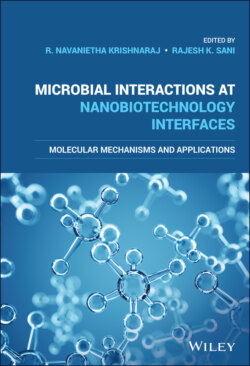Читать книгу Microbial Interactions at Nanobiotechnology Interfaces - Группа авторов - Страница 57
1.14 Conclusion and Future Perspectives
ОглавлениеThis section delineates an overview of NMs, their role in microbial resistance, and the effect of physicochemical factors on their antimicrobial property. The development of microbial resistance to antibiotics and other common disinfectants has driven researchers to look for novel strategies to treat infections. Pertaining to this issue, NMs have emerged as a promising solution to microbial resistance due to their broad spectrum of antimicrobial property along with ease of integration with other products for diverse applications. It is clear from the literature that the antimicrobial property of the material depends on certain crucial physicochemical properties such as size, shape, and surface chemistry. Further, the antimicrobial property of the system can be tuned by controlling those crucial physicochemical properties of nanostructures. Understanding of this phenomenon can be exploited to tailor NMs of interest with reduced nonspecific toxicity where the NMs can be engineered to be specifically active against microbial cells rather than mammalian cell systems. The discussion over the mechanism of action of metal and metal oxide NMs suggested that the mechanisms of action of these NMs are not merely dependent on the release of metal ions from the NMs but also depend on the nanostructures (size and shape) of the NMs, which contribute directly to the antimicrobial property of the NMs. In the present scenario, the toxic effect of NM systems and the mechanism of action over human systems are not clearly understood. All these issues can be addressed if we develop standardized testing protocols and define the NMs' properties on an international level and enforce it. Most importantly, future research in this field should be directed to further understand the complex relationship between the various physicochemical factors over the antimicrobial property and mechanism of action of the NMs.
